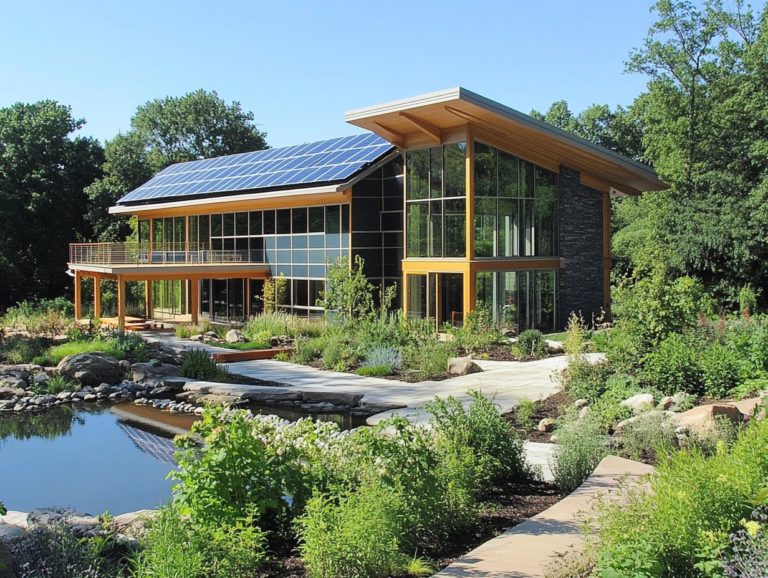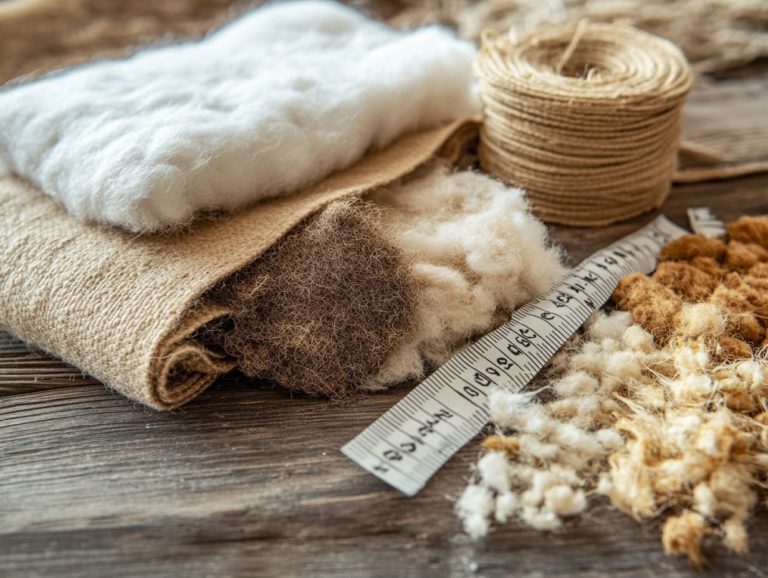Sustainable Choices for Indoor Air Quality
Indoor air quality is an essential yet frequently overlooked aspect of your living environment. Since you likely spend most of your time indoors, the air you breathe significantly impacts your health and well-being.
This exploration delves into the effects of indoor air quality, identifies common pollutants, and presents sustainable solutions to improve the air in your home and workplace.
You’ll discover eco-friendly cleaning products, natural purifying techniques, and long-term strategies to foster a healthier indoor atmosphere. Remember, your well-being begins with the air around you!
Contents
- Key Takeaways:
- The Importance of Indoor Air Quality
- Common Indoor Air Pollutants
- Sustainable Solutions for Improving Indoor Air Quality
- Creating a Sustainable Indoor Environment
- Frequently Asked Questions
- What are sustainable choices for improving indoor air quality?
- Why are sustainable choices important for indoor air quality?
- How can using natural cleaning products improve indoor air quality?
- What types of plants are best for improving indoor air quality?
- Is it necessary to use air purifiers for improving indoor air quality?
- How can proper ventilation contribute to sustainable indoor air quality?
Key Takeaways:
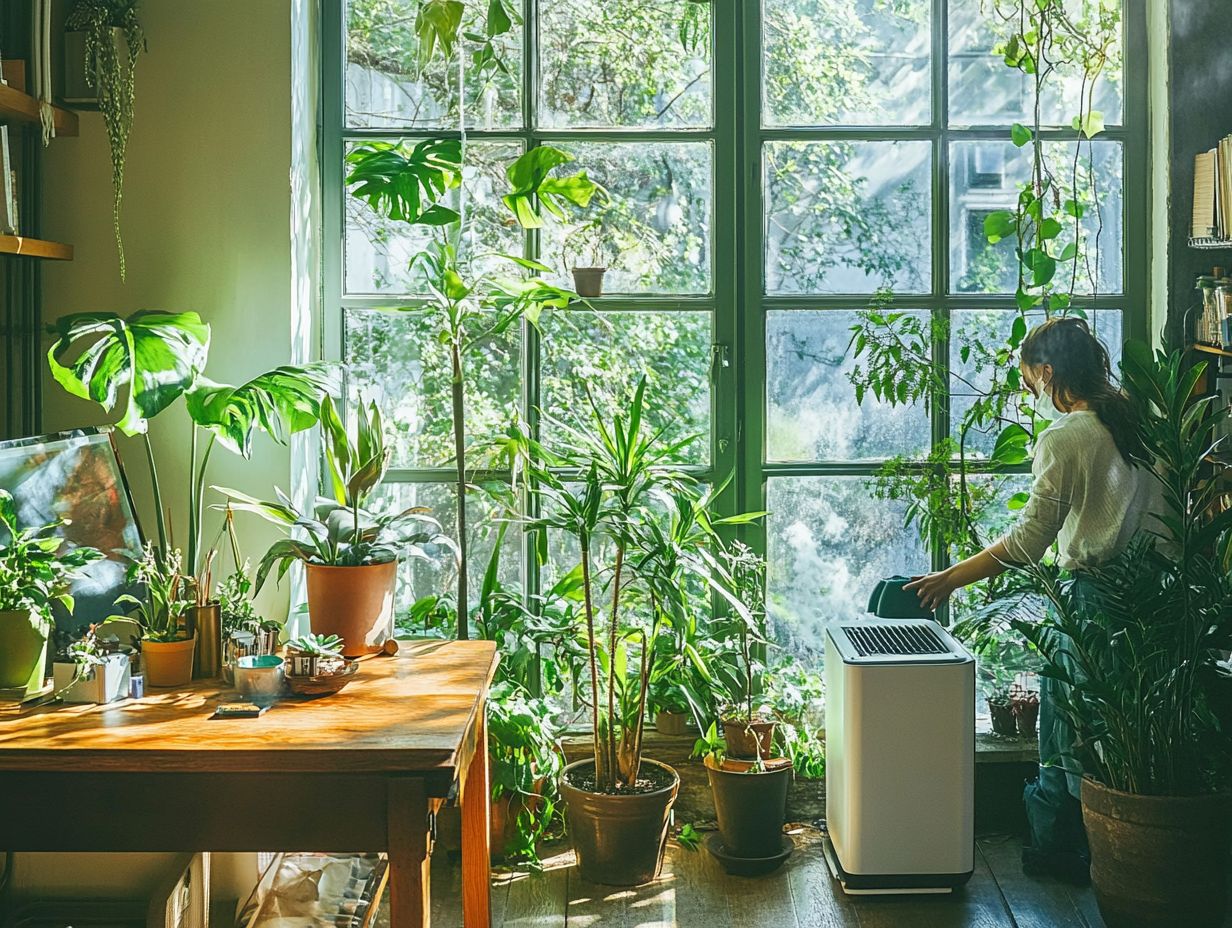
Breathing clean air is essential for our overall health and well-being. To improve indoor air quality, it’s important to identify and address common pollutants such as dust, mold, and chemical cleaners. Sustainable solutions like using eco-friendly cleaning products, natural air purifying techniques, and proper ventilation can help maintain a healthy and eco-friendly indoor environment.
The Importance of Indoor Air Quality
Indoor air quality (IAQ) is fundamental to preserving a healthy indoor environment. It profoundly influences your respiratory health and overall well-being.
When IAQ is compromised, it can lead to various health concerns, including respiratory issues and Sick Building Syndrome. These problems often stem from elevated air pollution levels, chemicals that can evaporate into the air (VOCs), and insufficient ventilation systems.
Recognizing the significance of IAQ is vital for both building operators and occupants. This understanding directly impacts your comfort and productivity.
Understanding the Impact on Health and Well-being
The impact of indoor air quality on your health and well-being is profound. Exposure to indoor air pollutants, such as VOCs, can pose serious health risks, including respiratory issues and allergies.
Particulate matter can worsen asthma and contribute to long-term cardiovascular problems. These conditions may start subtly but can significantly hinder your daily functioning.
Take charge and create a healthier living and working space now! By prioritizing the improvement of indoor air quality, you can cultivate healthier environments that enhance your overall well-being.
Better air quality not only decreases the risk of health issues but also boosts productivity and cognitive performance, leading to a more vibrant life.
Therefore, investing in proper ventilation and air purification can result in noticeable boosts in your energy levels and overall satisfaction.
Common Indoor Air Pollutants
Indoor air pollutants including chemicals that can evaporate into the air (VOCs), dust, mold, and products from cleaning are prevalent in many spaces.
These contaminants can substantially diminish indoor air quality, potentially leading to a range of health concerns.
Identifying and Addressing Sources
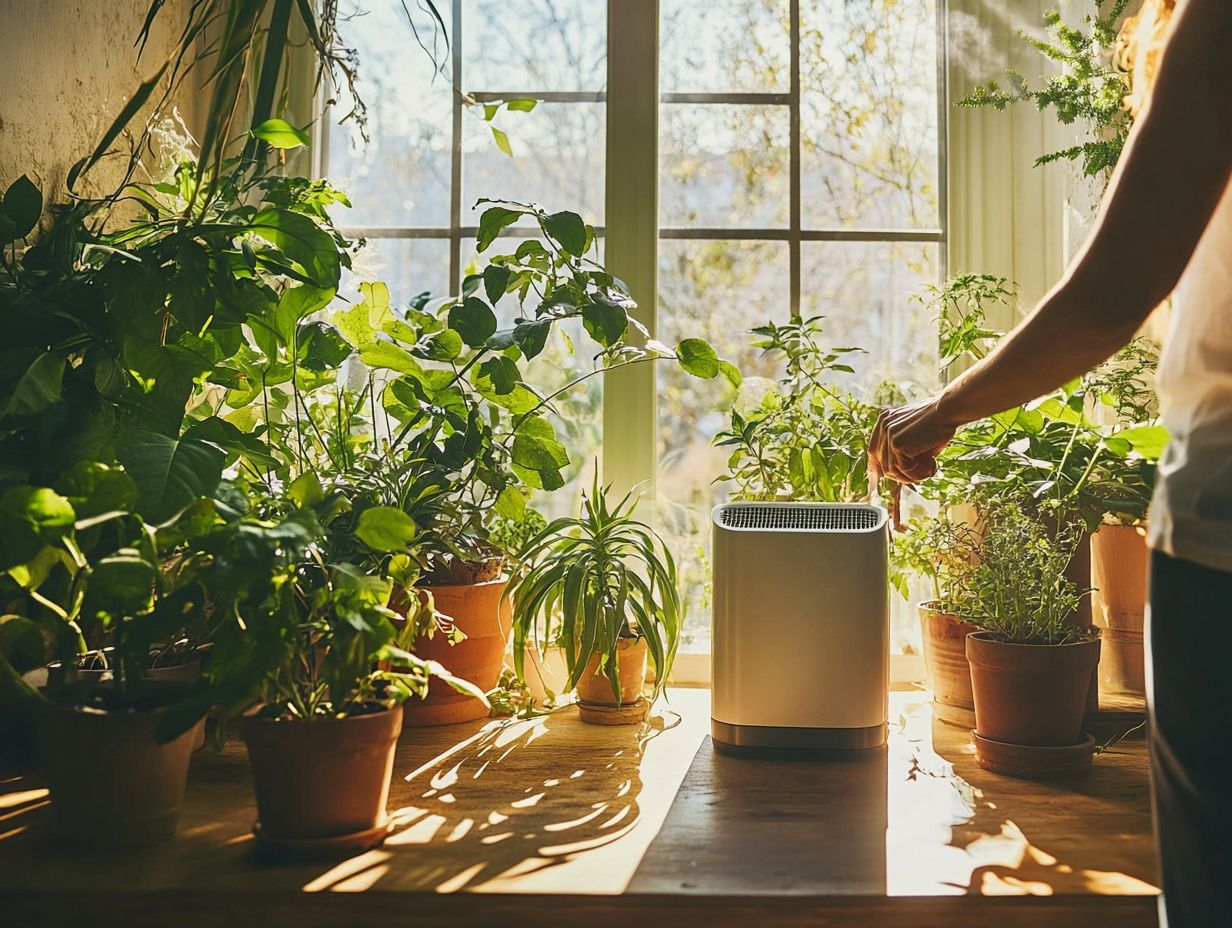
Identifying and addressing sources of indoor air pollutants is essential for effective air quality management. Many of these pollutants stem from common household items and building materials.
Being aware of these hidden sources can significantly enhance the overall health and well-being of everyone in your space.
Utilizing air quality assessments serves as a fundamental approach to pinpointing specific pollutants. These evaluations provide a detailed analysis of your air composition.
Implementing monitoring systems allows you to continuously track pollutant levels. This way, any spikes prompt immediate corrective actions.
Effective ventilation systems are also crucial for alleviating these pollutants. By enhancing air circulation while keeping comfort in mind, they can reduce contaminants without sacrificing energy efficiency, ultimately creating a balanced indoor environment that promotes both comfort and health.
Sustainable Solutions for Improving Indoor Air Quality
Implementing sustainable solutions to enhance indoor air quality requires embracing air filtration systems, adopting energy-efficient ventilation strategies, and incorporating natural air purifiers such as indoor plants.
Each of these elements plays a vital role in cultivating a healthier indoor environment for you and those around you.
Start your journey towards better air quality today!
Eco-Friendly Cleaning Products
Using eco-friendly cleaning products is a smart strategy for reducing indoor air pollutants and minimizing the release of VOCs into the environment, all while promoting a healthier living space.
Many may not realize that traditional cleaning agents often harbor harsh chemicals that can compromise indoor air quality (IAQ) and lead to health issues like respiratory problems and allergies.
By embracing sustainable materials found in eco-friendly alternatives, you can significantly enhance the air you breathe at home. Ingredients from plant-based sources not only lighten the toxic load but also create a more pleasant atmosphere.
Switching to biodegradable products helps your home and ensures a reduced ecological footprint, fostering a sense of responsibility towards the planet.
Breathe Easy with Natural Air Purifiers!
Natural air purifying techniques, such as incorporating indoor plants and ensuring proper ventilation, are essential for maintaining a healthy indoor environment and enhancing your overall air quality management.
Introduce a diverse range of indoor plants known for their air-filtering properties think spider plants, peace lilies, and snake plants to effectively reduce harmful toxins like benzene, formaldehyde, and carbon monoxide.
Place these plants strategically to boost aesthetic appeal and align with sustainable living practices. Using proper ventilation with these plants boosts air circulation, enriching your atmosphere and promoting well-being.
Embracing these techniques leads to healthier living for you and supports eco-friendly initiatives, positively impacting your long-term indoor air quality.
Proper Ventilation and Air Circulation
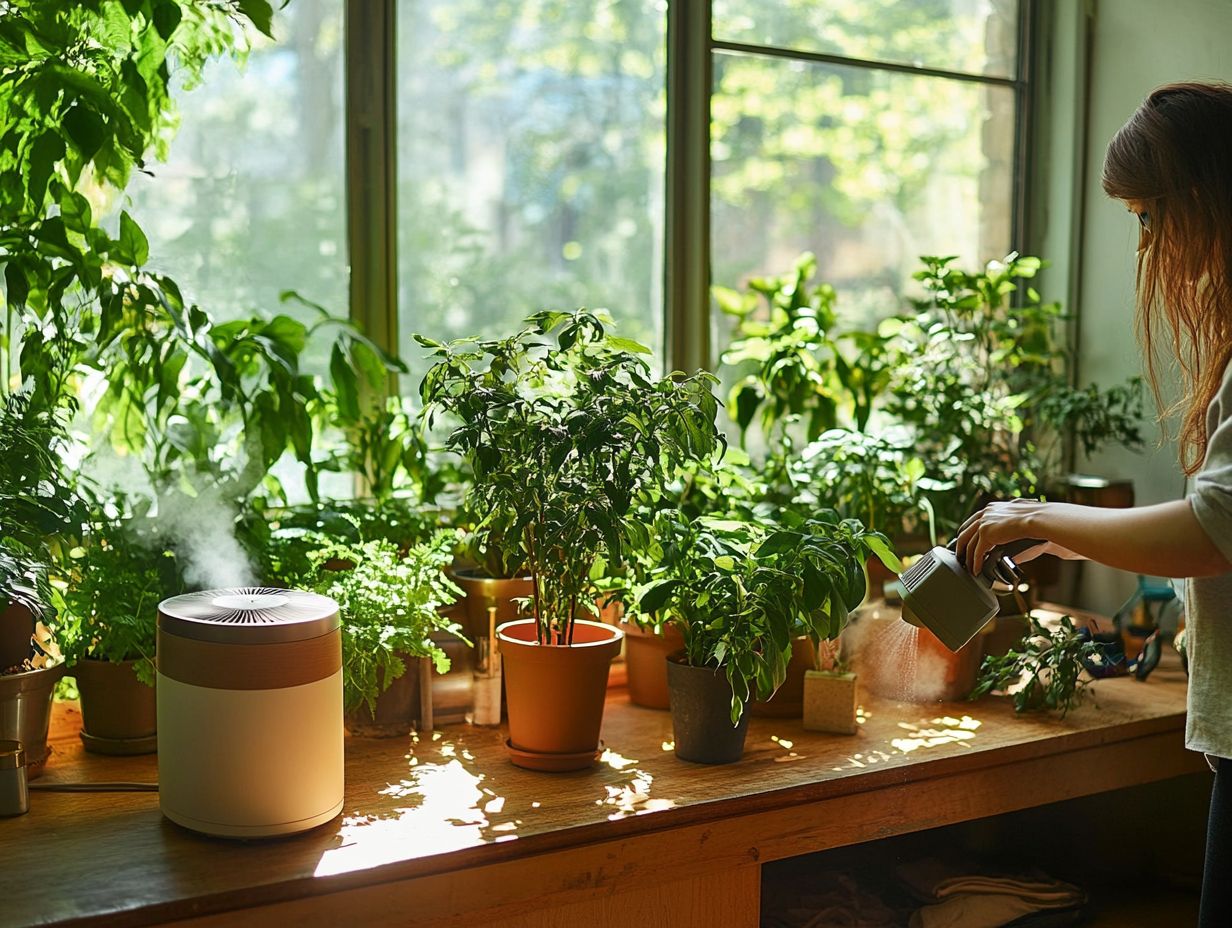
Proper ventilation and air circulation are crucial for a fresh and healthy home! They effectively remove pollutants and control humidity, ensuring a comfortable environment.
In modern buildings, advanced HVAC (Heating, Ventilation, and Air Conditioning) systems are key to optimizing these functions. These systems promote the flow of fresh air and filter out harmful contaminants, creating a healthier living space.
By embracing energy-efficient technologies, you can significantly lower energy consumption while keeping your indoor temperatures comfortable year-round. Regular maintenance and adherence to air quality management guidelines will enhance these systems’ performance, allowing them to operate at peak efficiency.
This holistic approach protects your health and comfort while supporting long-term sustainability in urban environments.
Creating a Sustainable Indoor Environment
Creating a sustainable indoor environment requires employing smart building design tips, conducting regular indoor air assessments, and engaging in ongoing maintenance practices.
This comprehensive approach ensures long-term air quality solutions that benefit both health and comfort.
Implementing Long-Term Changes
Implementing long-term changes to enhance indoor air quality requires your commitment as a building operator to embrace sustainable practices and consistently monitor air quality metrics.
Start by assessing your systems and finding areas for improvement, such as upgrading ventilation and enhancing filtration to effectively eliminate pollutants.
By routinely updating air quality management systems, you can ensure compliance with health regulations while actively promoting the well-being of your occupants.
Fostering a culture of sustainability means enabling your staff to recognize their pivotal role in maintaining these standards, encouraging energy-efficient behaviors, and advocating for the use of eco-friendly products.
Through these collaborative efforts, you and your stakeholders can make significant strides toward cultivating a healthier indoor environment, taking a commendable step forward in responsible building management.
Maintaining Good Indoor Air Quality
Breathe better today! Maintaining good indoor air quality is an ongoing journey. It requires regular checks, effective maintenance, and smart solutions.
Start by routinely checking your ventilation systems. These systems bring in fresh air and reduce pollutants.
Clean and inspect these systems regularly for any blockages or inefficiencies. This will boost their performance.
Employing air purifiers with HEPA filters can enhance air cleanliness. These filters trap tiny particles like dust and pollen.
Following established air quality guidelines is crucial. They provide a foundation for a healthy indoor environment.
By integrating energy-efficient solutions, you improve air quality and cut down on utility costs. This creates a win-win for your health and your budget.
Frequently Asked Questions
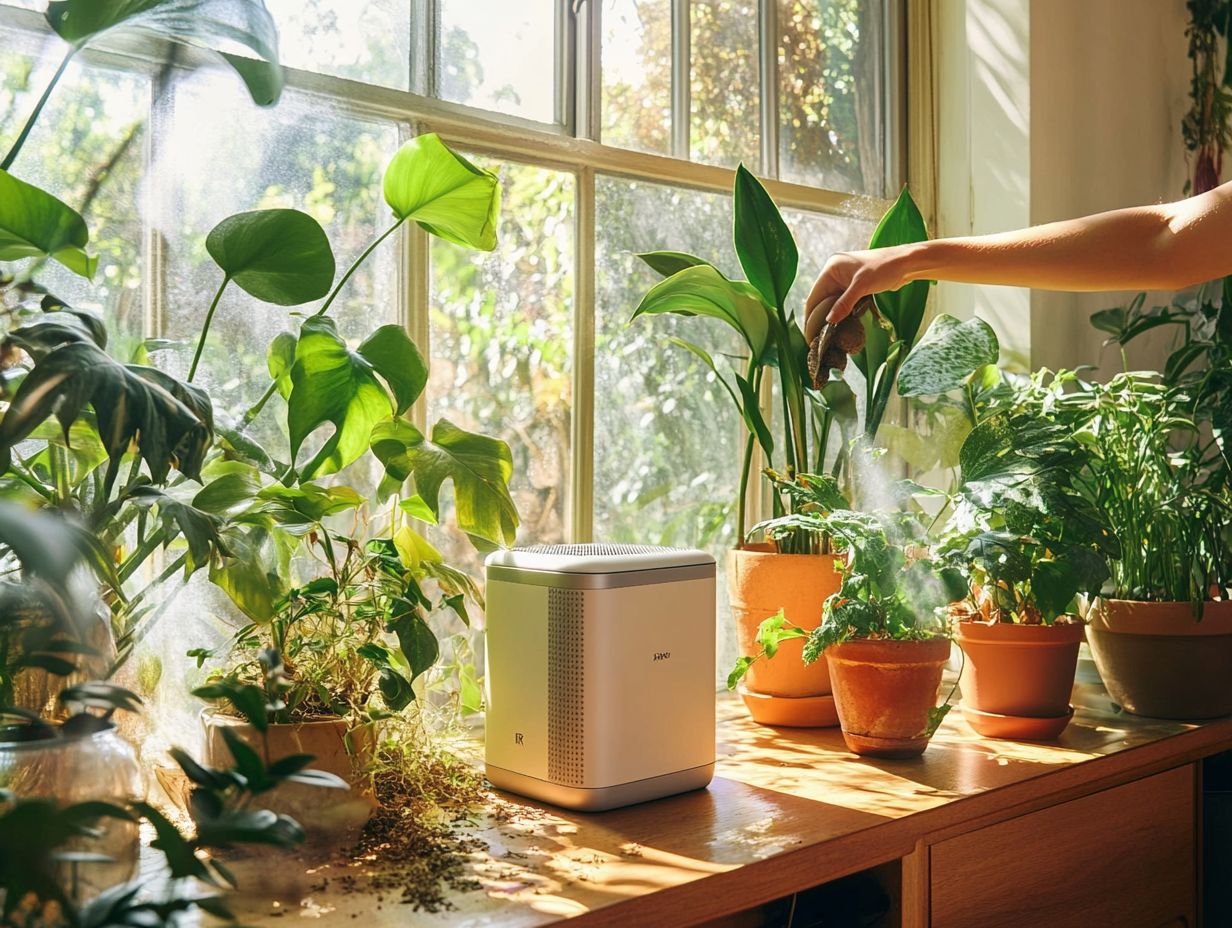
What are sustainable choices for improving indoor air quality?
Choose natural cleaning products, add plants to your space, and ventilate your home. Air purifiers with HEPA filters can also help.
Why are sustainable choices important for indoor air quality?
Sustainable choices reduce harmful chemicals and pollutants in the air. This helps protect our health and the environment.
How can using natural cleaning products improve indoor air quality?
Natural cleaning products use non-toxic ingredients. They don’t release harmful chemicals into the air, improving indoor air quality.
What types of plants are best for improving indoor air quality?
Plants like spider plants, peace lilies, and bamboo palms are great choices. They absorb pollutants and release oxygen.
Is it necessary to use air purifiers for improving indoor air quality?
It’s not necessary, but air purifiers can help remove pollutants and allergens. Choose one with a HEPA filter for the best results.
How can proper ventilation contribute to sustainable indoor air quality?
Proper ventilation allows fresh air to circulate, diluting pollutants. Opening windows and using ceiling fans promotes good ventilation.


